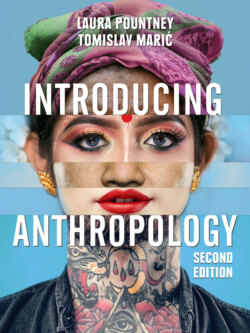Читать книгу Introducing Anthropology - Laura Pountney - Страница 42
The brain
ОглавлениеOne of the most significant differences between humans and other primates is that humans have a much larger brain. The modern human brain is three times larger in volume than that of the great ape. But it is not just the size of the human brain that is significant; it is the complex functional and cognitive abilities the brain engenders. However, a larger brain is also a more expensive brain. The human brain to body size ratio is significantly greater than in other species, and as a result the human brain requires 20 per cent of the energy used by the body, which is more than any other organ. The evolution of a larger brain suggests that a higher energy diet had also to evolve as a condition. Although the hominin lineage is over 6 million years old, brain size shows significant increases only from the time of Homo erectus, less than 2 million years ago. It was also around that time that we find evidence of a dramatic change in diet towards increased meat eating, more extensive use and manufacture of stone tools, and reduction in jaw and tooth size.
Large, complex brains can process and store a lot of information. This was a big advantage to early humans in their social interactions and encounters with unfamiliar habitats. Having a larger brain enabled modern humans to have much more complex forms of verbal communication than any other primate species. Humans are the only animal to create and use symbols as a means of communication. Humans also have more varied and complex social organizations. The most distinctive feature of humans is our mental ability to create new ideas and complex technologies, which has proved to be invaluable in the competition for survival. Another striking capability that derives from a larger and more effective brain is the ability to know what others might be thinking. In psychology, this is known as having a ‘theory of mind’.
Steven Mithen, an archaeologist, suggests that human forms of intelligence fall into four categories – social, technical, linguistic and natural history – which, once combined, led to the creation of consciousness. Having consciousness means having self-awareness, a sense of past and present.
However, the great apes are also surprisingly intelligent, having mental levels equivalent to a 3–4-year-old human child. This is sufficient to allow them to learn and use the sign language of deaf humans in at least a simplistic way. But, despite this, they do not have the capability of producing human speech and language.
